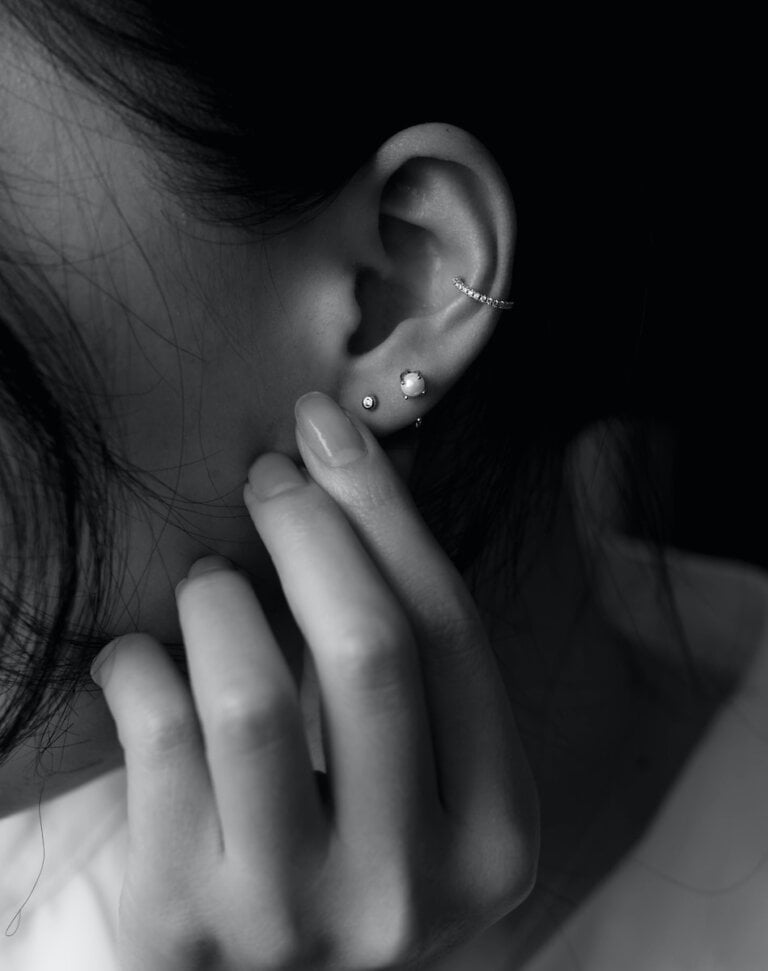Building Resilient Ears: Proactive Steps to Minimize the Risk of Ear Infection Recurrence
Last Updated on 25th April 2024 by Admin
Ear infections can be a common and uncomfortable health issue, particularly among children. The good news is that there are several proactive steps you can take to minimize the risk of ear infections and promote overall ear health. In this article, we will explore various strategies and practices that can help you build resilient ears and reduce the chances of developing ear infections.
Understanding Ear Infections
Before diving into preventive measures, it is essential to understand what causes ear infections and the potential risks they pose. Ear infections occur when bacteria or viruses infect the middle ear, causing inflammation and fluid buildup. This can lead to symptoms such as ear pain, hearing loss, and even fever.
Children are more prone to ear infections due to their still-developing immune systems and the structure of their Eustachian tubes, which are shorter and more horizontal than those in adults. However, people of all ages can experience ear infections, and it is crucial to take preventive measures to minimize the risk.
The Causes of Ear Infections
Ear infections can be caused by various factors, including:
-
Bacteria: The most common cause of ear infections is bacteria, such as Streptococcus pneumoniae and Haemophilus influenzae. These bacteria can enter the middle ear through the Eustachian tubes and cause infection.
-
Viruses: Certain viruses, such as respiratory syncytial virus (RSV) and influenza virus, can also lead to ear infections. These viruses can cause inflammation and fluid buildup in the middle ear.
-
Allergies: Allergic reactions can contribute to the development of ear infections. When allergies flare up, the Eustachian tubes can become blocked, preventing proper drainage and increasing the risk of infection.
-
Environmental Factors: Exposure to cigarette smoke, polluted air, and contaminated water can also increase the risk of ear infections. The chemicals present in smoke and pollutants can irritate the respiratory system, including the Eustachian tubes, making them more susceptible to infections.
The Risks of Ear Infections
Ear infections can pose various risks and complications if left untreated. Some potential risks include:
-
Hearing Loss: Persistent or recurrent ear infections can lead to temporary or permanent hearing loss, particularly in children. The inflammation and fluid buildup in the middle ear can affect the transmission of sound to the inner ear, resulting in hearing difficulties.
-
Speech and Language Development Issues: Young children with untreated ear infections may experience delays in speech and language development. The hearing loss caused by recurrent infections can make it challenging for children to understand and mimic sounds, affecting their overall communication skills.
-
Tympanic Membrane Perforation: In severe cases, the pressure from fluid buildup in the middle ear can cause the eardrum to rupture. This can result in a perforated tympanic membrane, leading to pain, hearing loss, and increased susceptibility to further infections.
Now that we understand the causes and risks associated with ear infections, let’s explore some proactive steps to minimize the risk and promote overall ear health.
1. Practice Good Hygiene
Maintaining good hygiene is one of the most effective ways to prevent ear infections. Encourage regular handwashing, especially before eating or touching the face. This simple habit can help reduce the spread of harmful bacteria and viruses that can lead to ear infections.
In addition to handwashing, there are other hygiene practices that can minimize the risk of ear infections:
-
Keep personal items clean: Ensure that personal items, such as towels and earbuds, are clean and not shared among individuals. Regularly disinfecting these items can help prevent the transmission of germs and reduce the risk of infection.
-
Avoid sharing personal care items: Sharing items like earphones, headphones, or even hair accessories can increase the chances of transmitting bacteria or viruses. Encourage everyone in your household to use their own personal care items to minimize the risk of ear infections.
-
Clean ears properly: While it’s important to keep the outer part of the ear clean, it’s equally important not to insert anything into the ear canal. Using cotton swabs can push wax deeper into the ear, potentially leading to blockages or damage. Instead, gently clean the outer part of the ear with a washcloth.
2. Avoid Exposure to Cigarette Smoke
Exposure to cigarette smoke, whether through active or passive smoking, can increase the risk of ear infections. The chemicals present in smoke can irritate the respiratory system, including the Eustachian tubes, making them more susceptible to infections.
To minimize the risk of ear infections related to cigarette smoke exposure, consider the following steps:
-
Create a smoke-free environment: If you or anyone in your household smokes, consider quitting or smoking outside to minimize the risk of ear infections. Avoid smoking indoors, especially in confined spaces, as the smoke can linger and increase the exposure of others to harmful chemicals.
-
Educate family and friends: If you have visitors or guests who smoke, kindly request that they smoke outside or away from children. Educate them about the risks of secondhand smoke and its impact on ear health.
-
Use air purifiers: Consider using air purifiers in your home to help remove harmful particles and reduce the overall air pollution. This can help create a cleaner and healthier environment, reducing the risk of ear infections.
3. Breastfeed Infants
Breastfeeding has numerous benefits for infants, including reducing the risk of ear infections. Breast milk contains antibodies that help strengthen a baby’s immune system, making them less susceptible to infections, including ear infections.
If possible, exclusive breastfeeding for the first six months of a baby’s life is recommended. Breast milk provides essential nutrients and antibodies that can help protect against various infections, including those that can lead to ear infections. However, it’s important to consult with a healthcare professional to ensure that breastfeeding is appropriate for your specific situation.
In addition to breastfeeding, here are some tips to promote overall ear health in infants:
-
Proper positioning during feeding: Ensure that your baby is properly positioned during breastfeeding to prevent milk from flowing into the Eustachian tubes. This can help minimize the risk of fluid buildup and subsequent infections.
-
Avoid bottle propping: When feeding with a bottle, avoid propping it up or allowing your baby to lie down with the bottle. This can increase the risk of milk flowing into the Eustachian tubes and contribute to ear infections.
-
Limit pacifier use: Excessive pacifier use, especially when contaminated or not properly cleaned, can increase the risk of ear infections. Limit the use of pacifiers and ensure they are cleaned regularly to minimize the risk of infection.
In the next section, we will explore the importance of vaccinations in preventing ear infections.
4. Vaccinate According to Schedule
Following the recommended vaccination schedule is crucial for preventing various infections, including those that can lead to ear infections. Vaccines such as the pneumococcal conjugate vaccine (PCV) and the influenza vaccine can provide protection against certain bacteria and viruses known to cause ear infections.
Ensure that both children and adults in your household are up to date with their vaccinations. Regularly consult with healthcare professionals to ensure that all necessary vaccines are administered. Here are some key points to consider:
-
Pneumococcal conjugate vaccine (PCV): This vaccine helps protect against Streptococcus pneumoniae, a bacterium commonly associated with ear infections. It is usually administered in multiple doses during infancy and early childhood.
-
Influenza vaccine: Influenza (flu) can lead to complications, including ear infections. Annual flu vaccination is recommended for individuals of all ages, especially those at higher risk, such as young children and older adults.
-
Other recommended vaccines: Depending on your location and specific circumstances, there may be additional vaccines recommended to prevent infections that can contribute to ear infections. Stay informed about the latest vaccination recommendations from healthcare authorities.
In the next section, we will discuss the importance of managing allergies to minimize the risk of ear infections.
5. Keep Allergies Under Control
Allergies can often contribute to the development of ear infections. When allergies flare up, the Eustachian tubes can become blocked, preventing proper drainage and increasing the risk of infection. Therefore, it is crucial to manage and control allergies effectively.
Consult with an allergist or healthcare professional to identify potential allergens and develop an appropriate management plan. Here are some strategies that can help keep allergies under control:
-
Identify and avoid triggers: Work with your healthcare professional to identify specific allergens that trigger your allergies. Once identified, take steps to avoid or minimize exposure to these triggers. This may involve making changes to your environment, such as using allergen-proof covers for mattresses and pillows or avoiding certain foods.
-
Take medication as prescribed: Depending on the severity of your allergies, your healthcare professional may recommend antihistamines or other medications to manage symptoms. Follow the prescribed treatment plan and take medications as directed to minimize the risk of allergic reactions and subsequent ear infections.
-
Consider allergy shots: In some cases, allergy shots (immunotherapy) may be recommended to help desensitize your immune system to specific allergens. This can help reduce the frequency and severity of allergic reactions, including those that can contribute to ear infections. Discuss with your healthcare professional if allergy shots are suitable for you.
In the next section, we will discuss the importance of maintaining a healthy immune system to prevent ear infections.
6. Maintain a Healthy Immune System
A strong immune system plays a vital role in preventing infections, including ear infections. To promote a healthy immune system, encourage a balanced and nutritious diet rich in vitamins, minerals, and antioxidants. Regular exercise, adequate sleep, and stress management are also essential for maintaining optimal immune function.
Here are some key points to consider when it comes to maintaining a healthy immune system to prevent ear infections:
-
Balanced and nutritious diet: Provide your body with the essential nutrients it needs to support a healthy immune system. Incorporate a variety of fruits, vegetables, whole grains, lean proteins, and healthy fats into your diet. These foods are rich in vitamins (such as vitamin C and vitamin E), minerals (such as zinc and selenium), and antioxidants, which can help strengthen your immune system.
-
Regular exercise: Engage in regular physical activity to boost your immune system. Exercise stimulates the circulation of immune cells and enhances their effectiveness in fighting infections. Aim for at least 150 minutes of moderate-intensity aerobic activity or 75 minutes of vigorous-intensity aerobic activity per week.
-
Adequate sleep: Prioritize quality sleep to support immune function. Lack of sleep can weaken your immune system, making you more susceptible to infections. Aim for 7-9 hours of quality sleep each night, and establish a consistent sleep schedule.
-
Stress management: Chronic stress can suppress immune function and increase the risk of infections. Practice stress management techniques such as deep breathing exercises, meditation, yoga, or engaging in hobbies and activities that help you relax and unwind.
In the next section, we will discuss the importance of safe swimming practices to prevent ear infections.
7. Practice Safe Swimming
Swimming in contaminated water can increase the risk of ear infections. The moisture in the ear canal combined with bacteria or fungi present in the water can create an ideal breeding ground for infections.
To minimize the risk, follow these safe swimming practices:
-
Choose clean and well-maintained swimming pools: Ensure that swimming pools you visit are properly chlorinated and maintained. Chlorine helps kill bacteria and other pathogens in the water, reducing the risk of infections. If you have a private pool, regularly test the chlorine and pH levels to maintain a safe swimming environment.
-
Use earplugs or a swim cap: Consider using earplugs or wearing a swim cap to prevent water from entering the ears while swimming. This can help reduce the chances of bacteria or fungi entering the ear canal and causing infections.
-
Dry ears thoroughly after swimming: After swimming, make sure to dry your ears thoroughly using a clean towel or a hairdryer on a low heat setting. Gently tilt your head to each side to allow water to drain from the ears. Moisture in the ear canal can promote bacterial or fungal growth, increasing the risk of ear infections.
In the next section, we will discuss the importance of limiting the use of headphones to prevent ear infections.
8. Limit the Use of Headphones
Using headphones or earbuds for extended periods can increase the risk of ear infections. Headphones can create a warm and moist environment in the ear canal, promoting bacterial growth. To reduce the risk, limit the duration of headphone use and keep the volume at a moderate level.
Consider the following tips to minimize the risk of ear infections associated with headphone use:
-
Take breaks: Avoid using headphones continuously for long periods. Take regular breaks to allow your ears to rest and recover.
-
Maintain a moderate volume: Listening to loud music or sounds through headphones can damage the delicate structures of the ear and increase the risk of infections. Keep the volume at a moderate level to protect your ears.
-
Clean and disinfect headphones regularly: Headphones can accumulate bacteria and other microbes over time. Clean them regularly using appropriate cleaning solutions or disinfectant wipes to minimize the risk of infection.
-
Consider noise-canceling headphones: Noise-canceling headphones can provide better sound quality at lower volumes, reducing the strain on your ears. Consider investing in noise-canceling headphones if you frequently use headphones for extended periods.
By incorporating these proactive steps into your lifestyle, you can significantly reduce the risk of ear infections and promote overall ear health. Remember to consult with healthcare professionals for personalized advice and guidance. Building resilient ears is a lifelong commitment to maintaining optimal health and well-being.
Note: The complete article is shown in markdown format below:
“`
Ear infections can be a common and uncomfortable health issue, particularly among children. The good news is that there are several proactive steps you can take to minimize the risk of ear infections and promote overall ear health. In this article, we will explore various strategies and practices that can help you build resilient ears and reduce the chances of developing ear infections.
Understanding Ear Infections
Before diving into preventive measures, it is essential to
FAQ
Q: What causes ear infections?
A: Ear infections can be caused by bacteria, viruses, allergies, and environmental factors such as smoke and pollutants.
Q: What are the risks of ear infections?
A: Ear infections can lead to hearing loss, speech and language development issues, and tympanic membrane perforation if left untreated.
Q: How can I practice good hygiene to prevent ear infections?
A: You can practice good hygiene by regularly washing hands, keeping personal items clean, and avoiding sharing personal care items. Avoid inserting anything into the ear canal.
Q: How can I minimize the risk of ear infections related to cigarette smoke exposure?
A: Create a smoke-free environment, educate family and friends about the risks of secondhand smoke, and use air purifiers to reduce air pollution.







